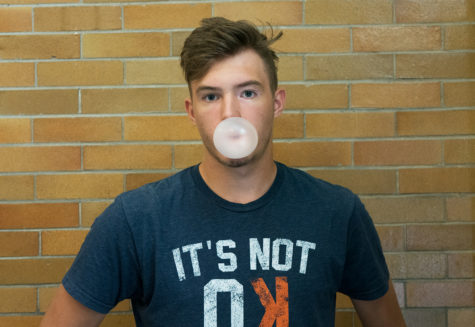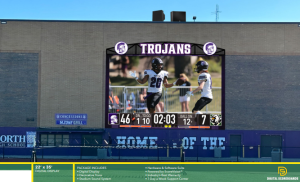Dance studio and flooring causes problems for Athenas
December 13, 2017
Dancing, according to former Downers Grove dance studio owner Patty Reilley, is an intricate art that requires the perfect conditions, something the current dance room lacks.
“Good flooring is critical for the safety and longevity of the dancers and the teachers. A sprung or floating sub-floor allows a bit of give which eases the impact on dancers’ joints,” Reilley said. “Shin splints are a very common injury for dancers who dance for long periods of time on a concrete floor.”
DGN’s dance room is located right next to the football locker room in the underground track, and provides the dancers with a less-than-ideal space to practice their routines for competition.
Because the team’s space for practice inhibits their ability to practice, they have to adapt, moving to places such as the purple gym balcony, which is concrete flooring, and the purple gym, which is a hardwood flooring that don’t have much give to protect the joints.
“The condition of the equipment is imperative to the safety of the dancers. Improper flooring can result in many injuries and long term grievances,” Reilley said.
Proper dance flooring is made out of a material called marley, which is made of sheet vinyl that overlays the surface of a sprung floor.
“[Marley] is very a expensive and heavy flooring, but I believe it is crucial for practices and classrooms. First and most importantly because of the safety concerns,” Reilley said. “Secondly, practicing on the same type of floor as your performance is truly beneficial. Tile, even with a non-slip coating is extremely slick and potentially dangerous to dancers.”
Senior varsity Athena Cecilia Kowara has dealt with her fair share of knee injuries, which she partially attributes to the constant change in venues for practice.
“We often practice in the purple gym balcony which is concrete, so that is absolutely horrible for your joints to leap and turn on that floor,” Kowara said.
Kowara isn’t the only one who has been injured because of the detrimental dance space merry-go-round.
“We were cleaning up our dance and were on the ground. We kicked out our legs into a push-up position,” Kowara said. “Because the room is so small and we were all squished, someone kicked another girl’s arm out from under her and she hyperextended her elbow and dislocating her shoulder.”
Not only are there injuries, it’s more difficult for the dancers to establish a connection as a unit.
“Everyday, the dance studio interferes with practice,” Kowara said. “Because the room is so small, we are never able to do the dance full out which is to our disadvantage in competitions. We can only do the dance in groups and that only helps ourselves individually. After that, the real important part of practice is connecting with the team and dancing as a whole. With the inability to do that during every practice, our scores in competitions suffer.”
Varsity Athenas coach Chloe Penny acknowledges the spacing issue, but believes it could be worse.
“The small space does not reflect the competition space, so during competition, dealing with the dance room and lack of space becomes a major issue,” Penny said. “I try to find alternative spaces and times from November to January.”
In competition, the dancers are scored on a variety of things, including spacing and the formation of the dancers, something the area of the dance studio doesn’t help with.
“Overall, they are athletes so they accommodate well, but we obviously much prefer the actual flooring that we compete on,” Penny said. “I would say the biggest issue is the spacing and markings on the floor in a regulation-sized gym that we don’t get when we don’t have court space. We have a hard time practicing to our maximum potential.”

























